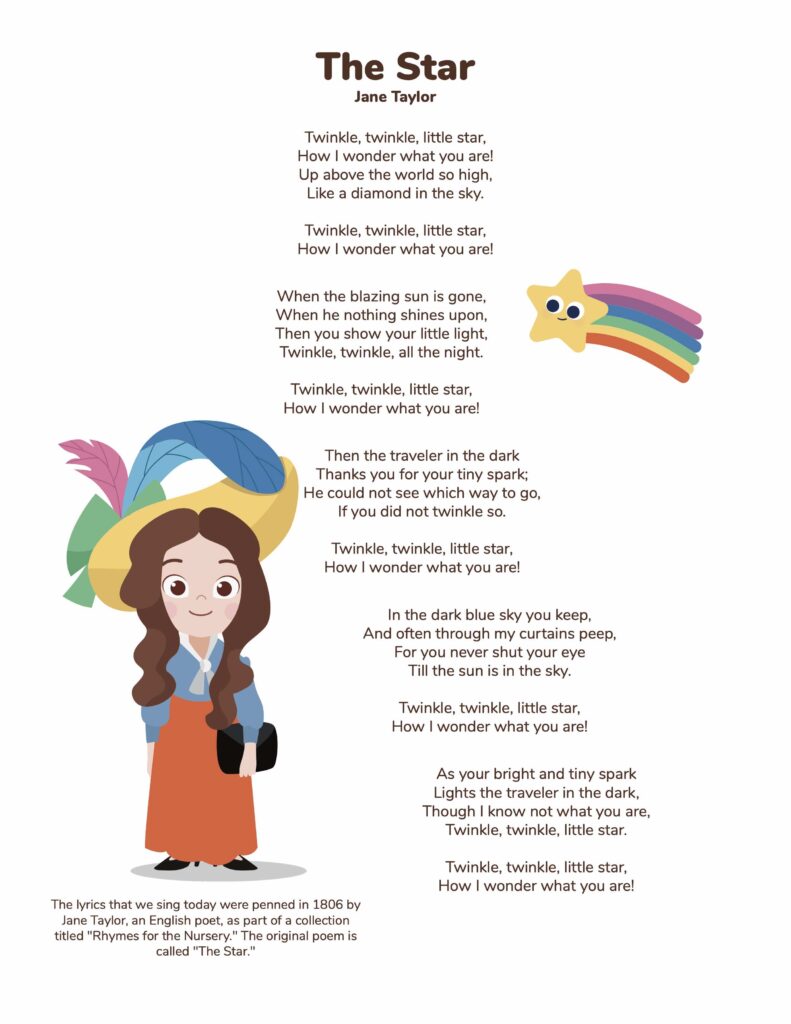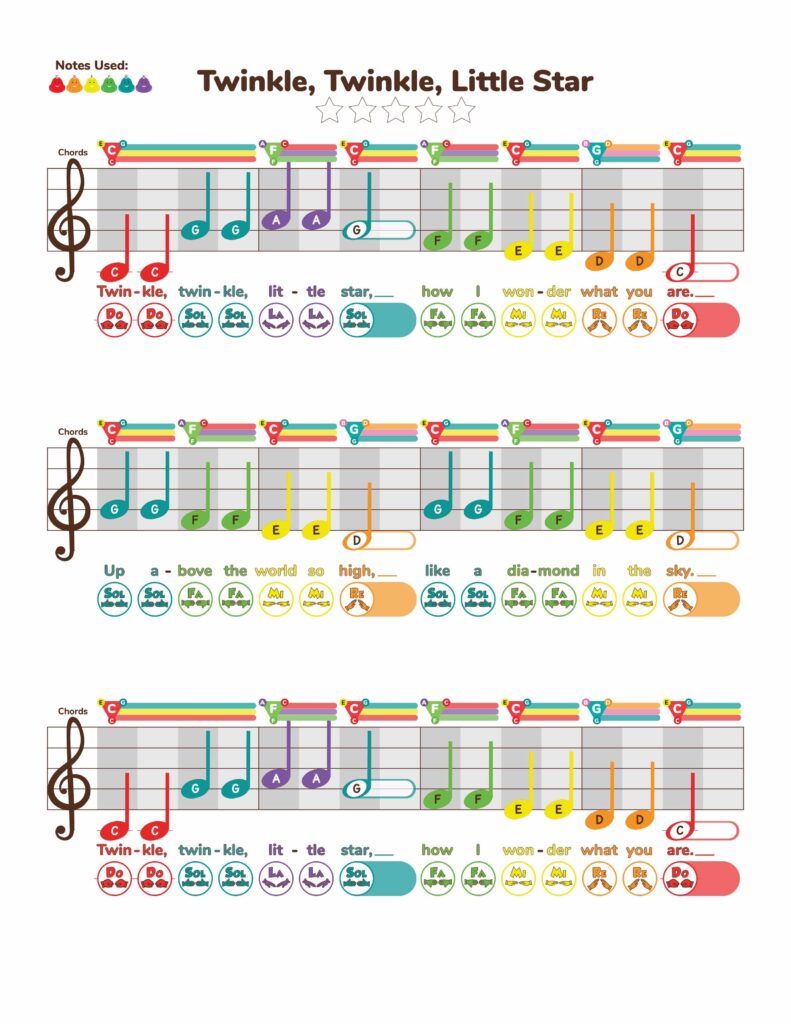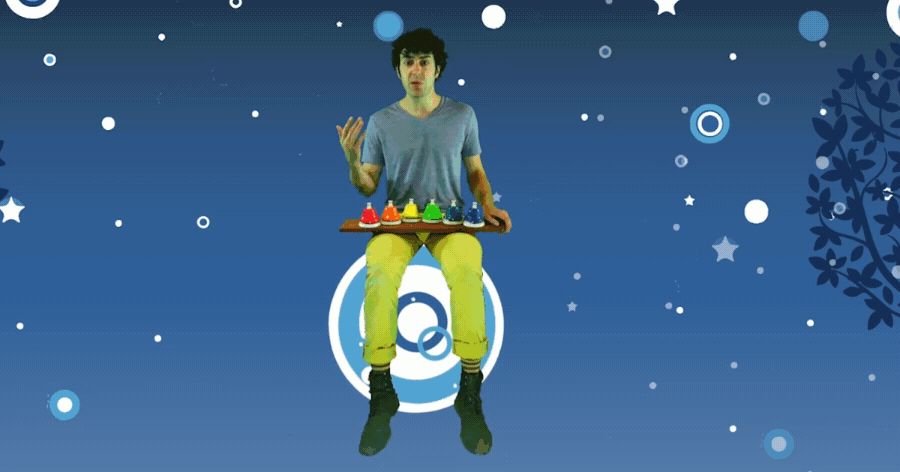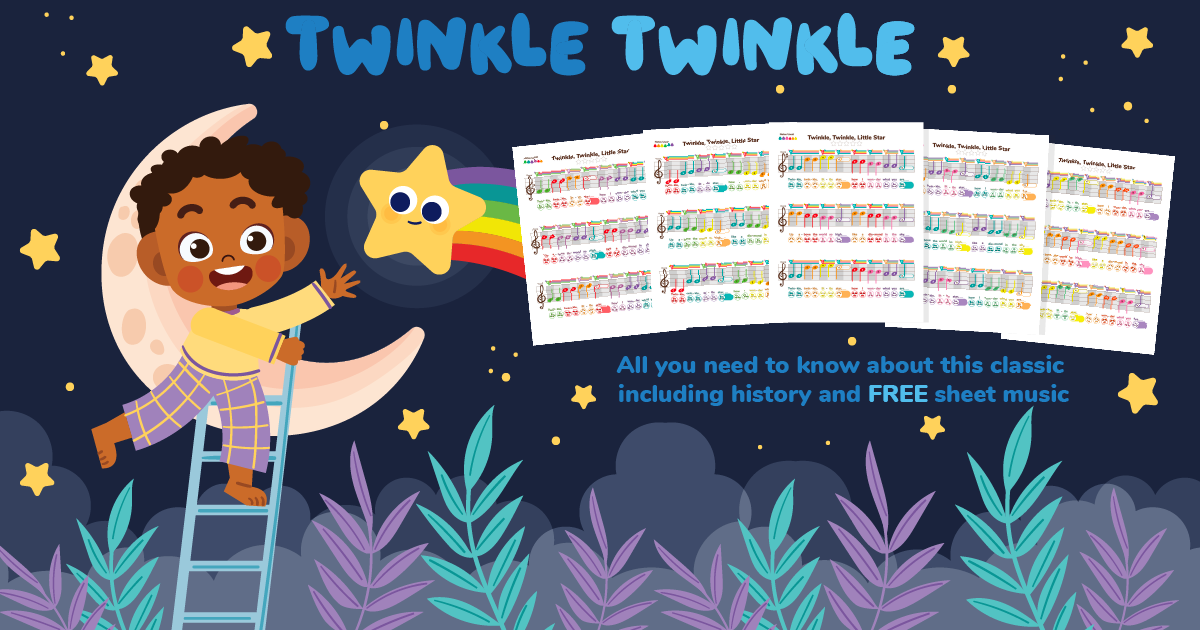Twinkle, twinkle, little star, how I wonder how much information we could possibly find out about this ol’ diddy. Think about it, “Twinkle, Twinkle Little Star” is more than just a lullaby, it’s a piece of history that has literally twinkled across time and space. The melody is older than the words themselves and has its roots in the classical era. Read: that’s like, a really long time ago.
Legend of an Age-Old Banger
While many attribute this timeless melody to Wolfgang Amadeus Mozart, it’s actually a French folk song, “Ah! vous dirai-je, Maman,” which dates back to the 18th century. However, when Mozart was just 25 years old he composed a set of twelve variations for piano that have since become some of his most beloved pieces—proving great music can stand on the shoulders of tradition.

Lyric Evolution
The lyrics that we sing today were penned by Jane Taylor, an English poet, in 1806 as part of a collection titled “Rhymes for the Nursery.” The original poem, also called “The Star,” has five stanzas, although only the first is widely known and sung.
Cultural Impact
Over the years, “Twinkle, Twinkle Little Star” has been translated into multiple languages and has become a staple in early childhood education around the world. Its simple, eloquent lyrics and melody make it an ideal teaching tool for young learners, introducing them to the wonders of language, music and the night sky.
Adaptations and Influence
The song’s influence extends beyond education, it has been adapted into various musical genres and has appeared in countless works of popular culture. It has been used in movies, television shows, and even as a part of other musical compositions, demonstrating its versatility and universal appeal.
The history of “Twinkle, Twinkle Little Star” is a testament to the song’s ability to enchant and educate simultaneously. It’s a melody that has stood the test of time, evolving while maintaining its magical ability to delight children and adults alike with a bit of reverie.
Sing, Sign & Play with “Twinkle, Twinkle Little Star”
Before we explore this starry wonder of a melody, we need to learn the lyrics to “Twinkle, Twinkle Little Star.” While the lyrics speak of an array of nighttime celestials, these are perfect for an evening under the stars or a daytime sing-along sesh.
The Lyrics
Twinkle, twinkle, little star,
How I wonder what you are!
Up above the world so high,
Like a diamond in the sky.
Twinkle, twinkle, little star,
How I wonder what you are!A Song for Many Tongues
Did you know that “Twinkle, Twinkle Little Star” has been translated into numerous languages? This global reach shows the universal appeal of the song. Invite your class or family to learn the song in another language for a fun and educational activity.
Beyond the First Verse
While the first stanza of “Twinkle, Twinkle Little Star” is widely known, the full poem by Jane Taylor includes more verses that continue the cosmic theme. Here’s more of the original poem for those who are curious:

When the blazing sun is gone,
When he nothing shines upon,
Then you show your little light,
Twinkle, twinkle, all the night.
Then the traveler in the dark
Thanks you for your tiny spark;
He could not see which way to go,
If you did not twinkle so.
In the dark blue sky you keep,
And often through my curtains peep,
For you never shut your eye
Till the sun is in the sky.
As your bright and tiny spark
Lights the traveler in the dark,
Though I know not what you are,
Twinkle, twinkle, little star.It’s high time we play some music…

Questions to Ponder
At Prodigies, we’re all about speaking the language of music. As musicians, when we want to demonstrate our ability, we use our repertoire to strut our stuff. Beyond that, though, we need to learn to communicate ideas effectively—on and off our instrument. The best way to pursue this goal is to be curious and ask questions.
What are the scale degrees associated with each note? The opening notes to Twinkle, Twinkle are a textbook example of a perfect 5th. Now we’re looking at the relationship between the notes, measuring the distance and assigning an intervalic label to that movement. Understanding melodic contour, being able to anticipate those movements allows us to get out of the music and interacting more with the listener.
What are the hand-signs associated with each note? The kinesthetic hand-signs solidify the relationship between the Solfege syllables and the melody. We’re using our whole body to communicate ideas, a tenet of good communication skills.

We’re not just playing a song now, we’re telling a story. Whether it’s the familiar first verse or the lesser-known stanzas, “Twinkle, Twinkle Little Star” continues to be a beloved tale for all ages. It’s a song that grows with the listener, offering more depth as they learn each verse and discover the world around them. Turns out, it can be a wormhole.

